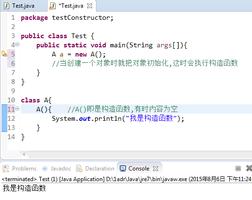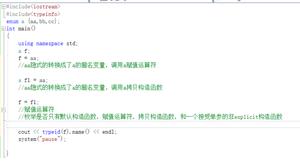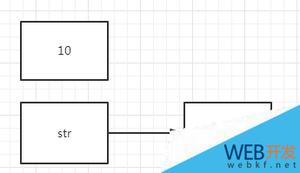异步/等待类构造函数
目前,我正在尝试async/await在类构造函数中使用。这样一来,我就可e-mail以为正在从事的Electron项目获取自定义标签。
customElements.define('e-mail', class extends HTMLElement { async constructor() {
super()
let uid = this.getAttribute('data-uid')
let message = await grabUID(uid)
const shadowRoot = this.attachShadow({mode: 'open'})
shadowRoot.innerHTML = `
<div id="email">A random email message has appeared. ${message}</div>
`
}
})
但是,目前该项目无法正常工作,并出现以下错误:
Class constructor may not be an async method有没有办法避免这种情况,以便我可以在其中使用异步/等待?而不需要回调或.then()?
回答:
这 行不通。
该async关键字允许await在标记为函数中使用async,但它也是功能转换成一个承诺发生器。因此,标有的函数async将返回承诺。另一方面,构造函数返回其正在构造的对象。因此,在这种情况下,您既要返回对象又要兑现承诺:一种不可能的情况。
您只能在可以使用诺言的地方使用async /
await,因为它们本质上是诺言的语法糖。您不能在构造函数中使用promise,因为构造函数必须返回要构造的对象,而不是promise。
有两种设计模式可以克服这一问题,它们都是在实现承诺之前发明的。
- 使用
init()功能。这有点像jQuery的.ready()。您创建的对象只能在其自身init或ready函数内部使用:
用法:
var myObj = new myClass();myObj.init(function() {
// inside here you can use myObj
});
实现方式:
class myClass { constructor () {
}
init (callback) {
// do something async and call the callback:
callback.bind(this)();
}
}
- 使用一个生成器。我没有看到它在javascript中使用很多,但是当对象需要异步构造时,这是Java中最常见的变通方法之一。当然,在构造需要大量复杂参数的对象时会使用构建器模式。这正是异步构建器的用例。不同之处在于异步生成器不会返回对象,而是返回该对象的承诺:
用法:
myClass.build().then(function(myObj) { // myObj is returned by the promise,
// not by the constructor
// or builder
});
// with async/await:
async function foo () {
var myObj = await myClass.build();
}
实现方式:
class myClass { constructor (async_param) {
if (typeof async_param === 'undefined') {
throw new Error('Cannot be called directly');
}
}
static build () {
return doSomeAsyncStuff()
.then(function(async_result){
return new myClass(async_result);
});
}
}
用async / await实现:
class myClass { constructor (async_param) {
if (typeof async_param === 'undefined') {
throw new Error('Cannot be called directly');
}
}
static async build () {
var async_result = await doSomeAsyncStuff();
return new myClass(async_result);
}
}
注意:尽管在上面的示例中,我们对异步生成器使用了Promise,但严格来讲它们并不是必需的。您可以轻松地编写一个接受回调的构建器。
注意在静态函数内部调用函数。
这与异步构造函数无关,而与关键字的this实际含义无关(这对于使用自动解析方法名称的语言(即不需要this关键字的语言)来的人来说可能有点令人惊讶。
的this关键字是指实例化的对象。不是班级。因此,您通常不能this在内部静态函数中使用,因为静态函数未绑定到任何对象,而是直接绑定到该类。
也就是说,在以下代码中:
class A { static foo () {}
}
您不能:
var a = new A();a.foo() // NOPE!!
相反,您需要将其称为:
A.foo();因此,以下代码将导致错误:
class A { static foo () {
this.bar(); // you are calling this as static
// so bar is undefinned
}
bar () {}
}
要修复它,您可以bar使用常规函数或静态方法:
function bar1 () {}class A {
static foo () {
bar1(); // this is OK
A.bar2(); // this is OK
}
static bar2 () {}
}
以上是 异步/等待类构造函数 的全部内容, 来源链接: utcz.com/qa/419337.html








